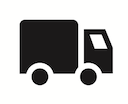Business Model Canvas Agenda Steps and Questions | MG RUSH
Mục Lục
Business Model Canvas — Agenda Steps and Questions
The Business Model Canvas was created by Alexander Osterwalder, of Strategyzer®. The canvas provides a one-page primer and template for analysis. Questions and points of view are detailed below.[1] We provide it to support the MG R
USH
Business Analyst community. Please modify each and all of the following to support your situation.
UPDATE: MG RUSH has released its Meeting Pathway (infographic guideline) and Workshop Canvas (37 open-ended preparatory questions). Consequently, the Meeting Pathway details a comprehensive meeting and workshop preparation approach that you can now download.
Business Model Canvas — Agenda Steps and Questions to be Addressed

-
Business Model Canvas: Partners
- Who are our significant partners?
- Who are our significant suppliers?
- What critical activities do our partners perform?
- What important resources are we acquiring from our suppliers?
- Value-add from partnerships
- Acquisition of specialized resources and activities
- Optimization and economy
- Reduction of risk and uncertainty
- Value-add from partnerships

-
Business Model Canvas: Activities
- What significant activities do our value propositions require?
- Which activities are the primary drivers of customer relationship?
- Where does our distribution channel provide value-add?
- What are the revenue streams for each channel?
- Categories
- Production activities
- Problem-solving activities
- Platform/ network
- Categories

-
Business Model Canvas: Resources
- What significant resources do our value propositions require?
- Which significant resources do our distribution channels require?
- What significant resources do our customer relationships require?
- Which significant resources do our revenue streams require?
- Types of resources
- Financial
- Human
- Intellectual (patents, copyrights, data, etc.)
- Physical
- Types of resources

-
Business Model Canvas: Value Propositions
- What value do we deliver to our customers?
- Which customer needs are we satisfying?
- Which customer problems are we helping to solve?
- What bundles of products and services are we offering to each customer segment?
- Characteristics
- Brand/ status
- Customization
- Design
- “Getting the Job Done”
- Newness
- Performance
- Characteristics

-
Business Model Canvas: Customer Relationships
- What type of relationships do each of our primary customer segments expect us to build and maintain with them?
- Which ones have we established?
- How are they integrated with the rest of our business model?
- How costly are they?
- Examples
- Automated services
- Co-creation
- Communities
- Dedicated personal assistance
- Personal assistance
- Self-service
- Examples

-
Business Model Canvas: Channels
- Through which channels do our primary customer segments want to be reached?
- How are we reaching them now?
- How are our channels integrated?
- Which channels work best?
- Which channels are most cost-efficient?
- How are we integrating them with customer routines?
- Channel phases
- Awareness
- How do we raise awareness about our company’s products and services?
- Evaluation
- How do we help customers evaluate our organizations value propositions?
- Purchase
- How do we allow customers to purchase specific products and services?
- Delivery
- How do we deliver a value proposition to our primary customer segments?
- After sales
- How do we provide post-purchase customer support?
- Awareness
- Channel phases

-
Business Model Canvas: Customer Segments
- For whom are we creating value?
- Who are our most important customers?
- Diversified
- Mass market
- Multi-sided platform
- Niche market
- Segmented

-
Business Model Canvas: Cost Structure
- Which costs are most critical our business structure?
- What primary resources are the most expensive?
- What primary activities are the most expensive?
- Is your business more . . .
- Cost driven (leanest cost structure, low price value proposition, maximum automation, extensive outsourcing)
- Value driven (focused on value creation, premium value proposition)
- Sample characteristics
- Economies of scale
- Economies of scope
- Fixed costs (salaries, rents, utilities)
- Variable costs
- Is your business more . . .

-
Business Model Canvas: Revenue Streams
- For what value are our customers willing to pay?
- For what value do they currently pay?
- How are they currently paying?
- What method would they prefer to use for paying?
- How much does each revenue stream contribute to overall revenues?
- Types
- Advertising
- Asset sale
- Brokerage fees
- Lending/ renting/ leasing
- Licensing
- Subscription fees
- Usage fee
- Fixed pricing
- Customer segment dependent
- List price
- Product feature dependent
- Volume dependent
- Dynamic pricing
- Negotiating (bargaining)
- Real-time market
- Yield management
- Types
For a more thorough discussion around business ideas and additional context around the Canvas, turn to “The Entrepreneur’s Foolproof 5-Step Guide to Finding and Validating Business Ideas”.
[1] The Business Model Canvas and Meeting Pathway and Meeting Canvas are licensed under the Creative Commons Attribution-Share Alike 1.0 Generic license and thus available for restricted distribution
______
Don’t ruin your career or reputation with bad meetings. Therefore, register now for a class or forward this to someone who should. Taught by world-class instructors, MG RUSH professional facilitation curriculum focuses on practice. Each student thoroughly practices and rehearses tools, methods, and approaches throughout the week. While some call this immersion, we call it the road to building impactful facilitation skills. #meetingresults
Our courses also provide an excellent way to earn up to 40 SEUs from the Scrum Alliance, 40 CDUs from IIBA, 40 Continuous Learning Points (CLPs) based on Federal Acquisition Certification Continuous Professional Learning Requirements using Training and Education activities, 40 Professional Development Units (PDUs) from SAVE International®, as well as 4.0 CEUs for other professions. (See individual class descriptions for details.) #facilitationtraining
Want a free 10-minute break timer? Signup for our once-monthly newsletter HERE and receive a timer along with four others of our favorite facilitation tools, free. #meetingdesign

Terrence Metz, MBA, CSM, CSPF, PSP01, HTTO1, is the Managing Director of MG RUSH Facilitation Training and Meeting Design, the acknowledged leader in structured facilitation training, and author of “Meetings That Get Results – A Facilitator’s Guide to Building Better Meetings.” His FAST Facilitation Best Practices blog features nearly 300 articles on facilitation skills and tools aimed at helping others lead meetings that produce clear and actionable results. His clients include Agilists, Scrum teams, program and project managers, senior officers, and the business analyst community among numerous private and public companies and global corporations. As an undergraduate of Northwestern University (Evanston, IL) and MBA graduate from NWU’s Kellogg School of Management, his professional experience has focused on process improvement and product development. He continually aspires to make it easier for others to succeed.















![Toni Kroos là ai? [ sự thật về tiểu sử đầy đủ Toni Kroos ]](https://evbn.org/wp-content/uploads/New-Project-6635-1671934592.jpg)


